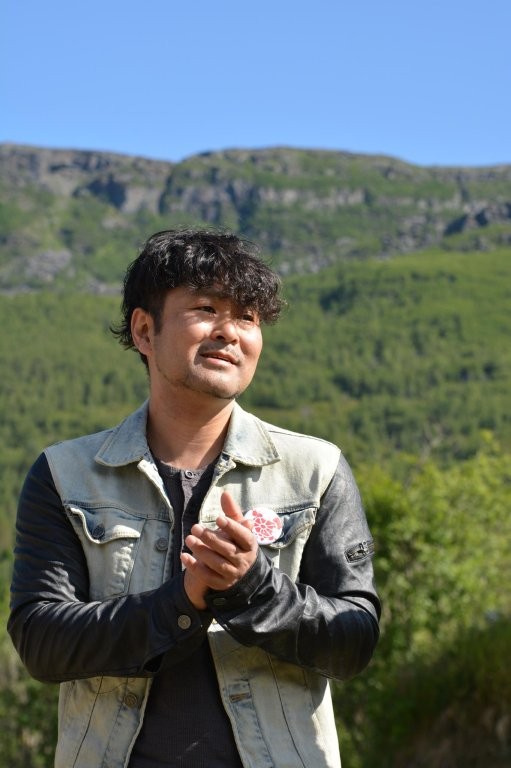Column
ColumnAncient wisdom illuminates the future ~Riddu Riđđu Festival~
From Tromsø Airport in Norway, the gateway to the Arctic Circle, it takes about two and a half hours by bus to travel north. I arrived in Manndalen, where the Riddu Riđđu festival was held. At this time of year, close to the summer solstice, the sun shines as brightly in the evening as it does during the day, and the coastline, as seen from the window of the train, is a primaeval landscape in itself. I was moved by its magnificent view.

I attended this festival for the first time in 2013. I decided to come back after 11 years. During this time the world has changed a lot, with the globalisation of the world through the internet and then the pandemic of COVID-19. I decided to visit this place again to see how Riddu Riđđu Festival has evolved in these changing times.
Riddu Riđđu Festival is an international indigenous festival that is organised mainly by the indigenous Sámi people who live in Norway, Sweden, Finland and Russia.
Started in 1991 by local Sámi youths, the festival has grown into a platform to make the Sámi people proud again of their culture and identity and to promote it to the outside world.
Now in its 33rd year, the festival brings together Indigenous artists from around the world and showcases their culture and art through a diverse programme of concerts, workshops, seminars, film screenings, book talks, art exhibitions, children’s events and youth programmes.
Through participating in the festival on two occasions, I have the feeling that the festival is run in a way that makes use of the ancient wisdom and knowledge of the Sámi peoples in the modern world. As a result, the festival has grown into an event that continues to create new forms.
I would like to introduce some of the key points of the festival.
Young leaders pass on the baton of Sámi culture

Director: Sajje Solbakk/ CEO: Bente Ovedie Skogvang
Photo: Riddu Riđđu Festivála
Compared to 11 years ago, the programme has improved and I was blown away by the energy in the hall. The younger generation is taking the lead, supported by the original members who’ve been involved since it started.
Particularly impressive was Sajje Solbak, who took over as director in 2022 at the age of 25. Under her leadership, the festival has become an important platform for the next generation of artists and audiences. In this way, the Sámi tradition is being passed on to a new generation.
There were other examples of traditions being carried on. One was that a primary school pupil I saw last time had become a mother and was attending with her child. I also met a veteran staff member who was volunteering at the venue for the 30th time.
I also saw young people from outside the Sámi community wearing the Gákti, the traditional Sámi costume, with respect, which shows that the appeal of Sámi culture is broadening and reaching new audiences.
The nature of equality: learning from the Sámi

NAMGAR from Republic of Buryatia (Guest: HAJIME SAKITA)
The concert programme was also varied. In addition to a powerful performance by the legendary Sámi singer Mari Boine, the new generation of Sámi singers Ella Marie and Emil Kárlsen, and the blind Joik singer GABBA also performed on the stage. The diverse line-up included Renata Flores who is 23-year-old Quechua from Peru, a Samoan metal band from New Zealand, Inuit from Canada and Mongolian indigenous people.
The message ‘NO PRIDE IN GENOCIDE’ was also displayed at the venue of the event. This message means that “there is no pride in genocide” and is superimposed on the social movements of the present day. There were also performances by drag queens and Pussy Riot, a group of artists who are strongly opposed to the authoritarianism of the Russian government. It shows a firm ‘questioning’ attitude to inequality in the world. However, these attitudes were not the aggressive intensity like the punk movement of the late 1970s, but rather a broad inclusiveness. I felt that this was the result of the lesson that the Sámi peoples had for a long time clearly communicated their assertion, taken action step by step and won their rights against assimilation policies and oppression.
Everyone is equal in front of the fire

I participated in the Riddu Riđđu Festival as a representative of Japan. The festival brought together people from Iceland, Norway, Uganda, Canada, Greenland, Peru, Alaska, Denmark and Slovakia. And day after day, international discussions took place around the fires in the tents. For the Sámi peoples, fire is more than a source of light and heat. It is a spiritual symbol at the heart of the community. This tradition was also followed when the delegates met around the fire, allowing everyone to speak equally and encouraging a natural dialogue. The idea that there is no hierarchy in front of the fire and that all people have equal rights to express their opinions is deeply rooted in Sámi culture.
Sharing my personal episode, I couldn’t pick up my suitcase during the time I was there because of lost luggage. It was difficult because of the temperature difference, but I was saved by learning the traditional Sámi wisdom of using straw for socks. In turn, the unexpected difficulties I encountered taught me a valuable lesson.
About 30 years ago, the internet began to spread widely. Considering the indigenous people have lived here for thousands of years, it’s only about 1/150th of that. There is much to learn from this festival, based on ancient wisdom, as AI rises and the world continues to change at an accelerated pace. There are also a lot of things in my head about the ancient wisdom of the Japanese people.
Harmony Fields Koiwa Kou








